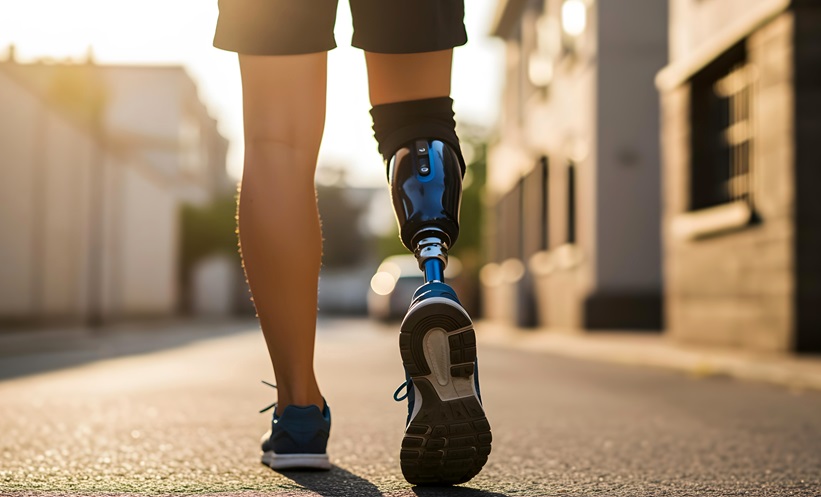INTEGRATED, tissue-anchored prosthetic limbs that interface directly with bone and nerves have been shown to restore more natural, dynamic movement, and enhance the sense of embodiment in lower-limb amputees compared to traditional socket-based prostheses.
Traditional artificial limbs have long focused on restoring basic mobility for amputees, but many users still face significant challenges, including instability, discomfort, and a lack of sensory feedback. Socket-based prostheses, which fit over the residual limb, can cause skin problems and often feel like external tools rather than part of the body. Recent advances in neurotechnology and surgical techniques have paved the way for a new generation of integrated prosthetic systems that aim to address these limitations by creating a more seamless connection between human physiology and artificial limbs.
In a recent study, researchers developed an osseointegrated mechanoneural prosthesis (OMP) that combines several cutting-edge approaches. The system involves surgically inserting a titanium rod into the residual femur bone, providing direct skeletal attachment and improved load-bearing compared to traditional sockets. This design not only increases comfort but also reduces the risk of skin complications. The OMP also incorporates electrodes and wires that interface with the remaining muscles in the limb, enabling bidirectional communication between the user’s nervous system and the prosthesis. Data from these sensors are relayed to a robotic controller, which interprets the user’s intended movements and calculates the necessary torque to move the prosthetic limb accordingly.
Two individuals with the OMP system participated in trials alongside 15 other amputees using a powered knee prosthesis. The OMP users demonstrated significantly better performance in walking, knee bending, stair climbing, and negotiating obstacles. Importantly, they also reported a greater sense of the prosthesis being part of their own body, rather than simply an external device. These findings suggest that integrated prosthetic systems can restore more natural, dynamic movement and improve quality of life for amputees.
Although these results are promising, larger clinical trials are needed before such prostheses can become widely available in clinical practice. For clinicians, these advances highlight the potential for future prosthetic care to move beyond basic mobility, offering patients improved comfort, control, and embodiment. Ongoing research will be essential to refine these technologies, assess long-term outcomes, and ensure safety and accessibility for a broader population of amputees.
Reference
Fisher L Integrated prostheses restore dynamic movement. Science. 2025;DOI:10.1126/science.adz2507.








